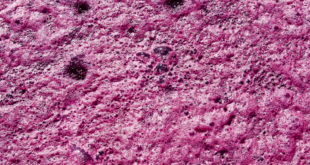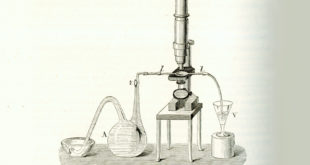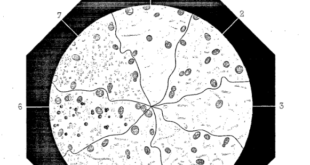During the terrible days of the supremacy of the Commune in Paris, at the end of the Franco-German war, Pasteur was occupied in the laboratory of M. Duclaux, at Clermont-Ferrand, in studying the diseases of beer, with a view to attempt to raise French beer to the higher standard of the German brewers. Beer is naturally more prone to disease than wine, on account of the comparatively large quantity of gummy and sacchari9ne matters which it contains in a state favorable to rapid decay. When the fermentation of the wort of beer sets in at the high temperature to which it is raised in mashing the liquid requires to be rapidly cooled. So long as it remains between the temperatures of 77˚ and 95˚ of Fahrenheit’s scale it is peculiarly liable to be attacked by the injurious ferments proper to acetic, lactic, and butyric acids. If the must of beer were spontaneously fermented, like the must of grape juice, an acid of putrid liquid would invariably be produced in the place of beer. In the old process of what was technically known as high fermentation, which is also the one that is still employed with the bitter beers and pale ales of England, the fermenting liquid was kept in barrels, at a temperature ranging from 64˚ to 68˚ Fahrenheit. In the process of “low fermentation” which is more generally employed by the brewers of Germany and France, a slow fermentation is established at a lower temperature, during which the yeast settles down to the bottom of the tubs and casks.
The wort is then transferred to open tuns, and the fermentation is carried on at a temperature as low as 43˚ Fahrenheit, which is maintained by means of floating cylinders filled with ice for from 10 to 20 days. This low fermentation beer is principally prepared in the Winter season, and is preserved in ice caves until the Summer. The cost of its production is on this account comparatively high. Twenty-two gallons of the beer require something like two hundred weights of ice for their maturation. The wort of beer, after it has been raised to the boiling point, may be kept indefinitely if it be mixed only with pure yeast, and if it be preserved from contamination with extraneous germs that are diffused through the air. The beers fermented and kept at low temperatures to some extent fulfill this condition. By the employment of ice the brewer is able to meet the demands of a long period of consumption without any great risk of contamination by accidental impurities. But Pasteur has introduced an additional safeguard, even more sure than the lower temperature fermentation. He has taught the brewers to bottle the beer when fermentation is approximately complete, and then to expose the bottles for a short time to a temperature ranging between 122˚ and 131˚ Fahrenheit. By this management all extraneous germs of undesirable ferments are killed, and the beer consequently remains sound for long periods of time. This is essentially the practice which is now pursued upon a very large scale, and which is familiarly known as the Pasteurization of beer. In addition to the adoption of this process, the principle chiefly insisted upon by Pasteur is that the wort shall be protected while cooling from all organisms accidentally floating in the air, and that the leaven used for the wort shall be absolutely pure and itself free from contaminating organisms. At the recent Exhibition of Amsterdam M. Velten, of Marseilles, showed bottles half full of a perfectly clear beer which had been tapped at the opening the Exhibition and left in this exposed state to prove the keeping powers of the liquid. This was beer which had been subjected to Pasteur’s method or preservation. –The Edinburgh Review.
Originally published in The New York Times on January 1, 1886
 Pasteur Brewing Louis Pasteur – Science, Health, and Brewing
Pasteur Brewing Louis Pasteur – Science, Health, and Brewing 



